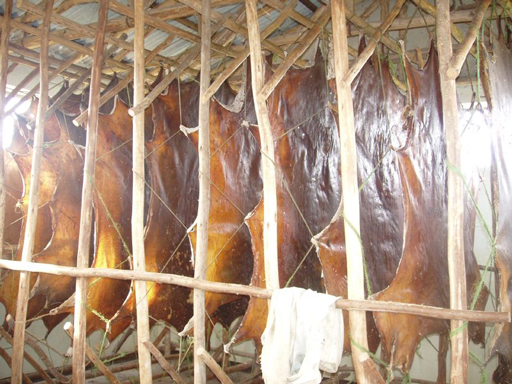4.3.3 Tanneries
Ethiopia has the largest livestock population of all countries in Africa (TAM Consult, 2008) and tanning of animal hides is an important economic activity. There are 26 major tanneries in Ethiopia (UNIDO, 2012) producing a range of products from sheep, goats and cows including partly processed hides and finished leather (Figure 4.6).

Tannery effluent is highly polluting and is often discharged directly to nearby rivers without adequate treatment. It contains toxic (poisonous) chemicals such as chromium, sulphides and organic acids, as well as organic matter and solids. Chromium is a particular problem because it is an example of a heavy metal. Heavy metals are a group of toxic chemical pollutants that persist in the environment, i.e. they do not get broken down by natural processes. Tannery wastewaters are produced in large volumes and are considerably more polluting than wastewaters from most other industries. The treatment of tannery waste involves removing solids and organic matter from the effluent. These processes are described in Study Session 6.
4.3.2 Textile industry
